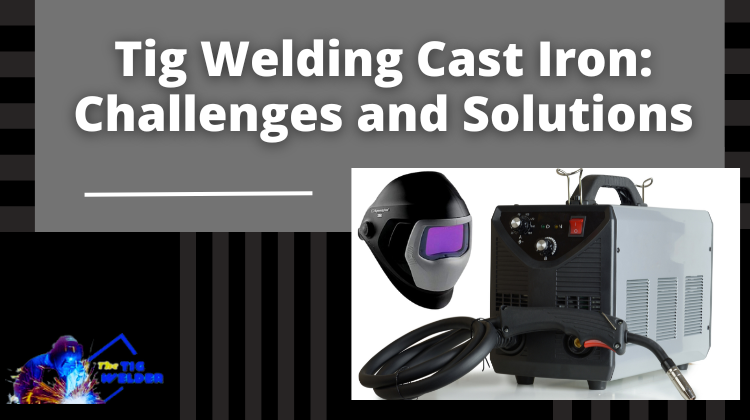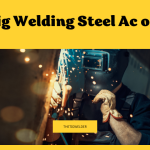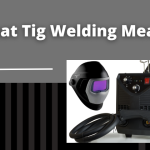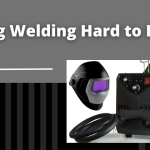A tig weld is produced by heating a tungsten electrode with a gas that acts as a welding electrode. Tig welding is also known as gas tungsten arc welding (GTAW). Industries like aerospace, automotive, and heavy machinery manufacturers often use this highly precise and versatile method.
Cast iron is a type of iron that has been poured into a mold to create a specific shape. It is known for its high melting temperature, strength, and wear resistance, making it a popular choice for many applications, such as engine blocks, machinery parts, and pipes. However, tig welding cast iron can present several challenges due to its unique properties.

Best Tig Welding Cast Iron Challenges & Solutions
Tig welding cast iron can present some unique challenges, such as the high levels of carbon and silicone in the material. These elements can make the weld pool unstable and prone to cracking. However, with the right techniques and equipment, it is possible to achieve strong, durable welds on cast iron. This guide will discuss some of the challenges of tig welding cast iron and provide solutions for overcoming them.
Challenges Of Tig Welding Cast Iron
High melting temperature: One of the main challenges of tig welding cast iron is its high melting temperature, ranging from 1,400 to 1,800°C (2,550 to 3,270°F). This means it requires a higher heat input to melt the metal, making it difficult to control the weld puddle and avoid warping or cracking.
Difficulty obtaining a clean, oxide-free weld: Cast iron is prone to forming oxide layers on its surface when exposed to air and moisture. These oxide layers can interfere with the weld and lead to poor quality, porosity, and even weld failure. Removing these oxide layers can be time-consuming, and it is important to ensure that the surface is clean and oxide-free before beginning the weld.
Prone to cracking and warping: Another challenge of tig welding cast iron is its tendency to crack or warp during the welding process. Several factors, including high residual stress levels, rapid cooling, and improper technique, can cause this.
Solutions For Tig Welding Cast Iron
Preheating the cast iron: Preheating the cast iron before welding can help reduce residual stress and improve weldability. It can also lower the melting temperature of the metal, making it easier to control the weld puddle and reduce the risk of warping or cracking. Preheating can be done using a torch or heating elements, and it is important to maintain a consistent temperature throughout the process.
Using a low amperage and slow weld speed: Welding at low and slow weld speeds can help minimize the heat input and reduce the risk of warping or cracking. It is also important to maintain a consistent arc length to control the weld puddle and ensure that the weld is of the desired size and shape.
Cleaning the surface with a wire brush or grinding wheel: Removing oxide layers from the surface of the cast iron is crucial for achieving a clean and successful weld. This can be done using a wire brush or grinding wheel to scrub the surface and remove any dirt or debris. It is important to work in a clean, dry environment to prevent the formation of new oxide layers during the welding process.
Applying a ceramic coating: Another solution for protecting against oxide formation is to apply a ceramic coating to the surface of the cast iron. This can help create a barrier between the metal and the atmosphere, preventing the formation of oxide layers and improving the overall weldability of the material.
Using a filler rod or wire with a higher melting temperature: Choosing a filler rod or wire with a higher melting temperature can help reduce the risk of cracking or warping during the welding process. It is important to match the filler material to the base metal and choose a product compatible with the specific application.
Proper technique: Maintaining proper technique is key to achieving a successful weld when tig welding cast iron. This includes controlling
the weld puddle, maintaining a consistent arc length, and applying the right heat input. Keeping the tungsten electrode clean and properly shaped is also important to ensure a stable arc and high-quality weld.
FAQ’s
What Is The Main Problem In Welding Cast Iron?
The main problem in welding cast iron is that it is prone to cracking and brittleness due to its high carbon content and sensitivity to temperature changes. Cast iron also has a lower melting point than steel, making it more difficult to weld.
Can You Weld Cast Iron With Tig?
It is possible to weld cast iron with TIG (inert tungsten gas) welding. TIG welding is a type of welding that uses a non-consumable tungsten electrode to produce an electric arc, which is used to melt and fuse the metal. TIG welding can be used to weld various metals, including cast iron. However, it is important to note that TIG welding is a more advanced technique requiring a skilled welder to achieve good results.
What Special Welding Considerations Do Most Cast Irons Require?
Several special welding considerations must be taken into account when welding cast iron:
- Preheating: Preheating the cast iron before welding can help reduce the risk of cracking and improve the overall quality of the weld.
- Cooling: It is important to allow the welded area to cool slowly after welding to prevent cracking. This can be achieved using a heat-resistant material to cover the welded area.
- Welding technique: It is important to use a slow and controlled welding technique when welding cast iron to prevent overheating and reduce the risk of cracking.
What Are The Limitations Of Tig Welding?
Some of the limitations of TIG welding include the following:
- Limited thickness: TIG welding is not suitable for welding thick materials because it is a slow process, and the heat needs to be distributed evenly.
- Skill required: TIG welding requires a high level of skill and accuracy, as the welder must manually feed the filler metal into the weld pool.
- Expensive equipment: TIG welding requires specialized equipment, such as a TIG torch and a power supply, which can be expensive.
What Are The 3 Most Common Defects In Welding?
The 3 most common defects in welding are:
- Porosity: Porosity, or tiny voids or holes in the weld, is caused by gas pockets trapped in the weld metal. It can be caused by contaminants in the welding material or improper welding techniques.
- Cracks can occur in the weld or the base metal surrounding the weld. They can be caused by stress, improper preheat and interpass temperature, or high restraint.
- Undercut: Undercut is a groove that is melted into the base metal along the edge of the weld. It can be caused by improper welding techniques or using a welding current that is too high.
Conclusion
Tig welding cast iron can be challenging due to its high melting temperature, the tendency to form oxide layers, and the risk of cracking or warping. However, it is possible to achieve a successful and high-quality weld by using solutions such as preheating, low amperage and slow weld speed, surface preparation, ceramic coating, and proper technique. It is important to thoroughly plan and prepare for the welding process and to carefully follow proper procedures and guidelines to ensure the best possible results.

It’s been years since I got into welding as a side hustle. It’s been so long since Doing All kinds of welds for business and pleasure as this is my hobby. Being in this field I have learned from hands-on-experience also came to know what gears work and what doesn’t. The Tig Welder is my own platform where I use to share my experience.






Leave a Reply